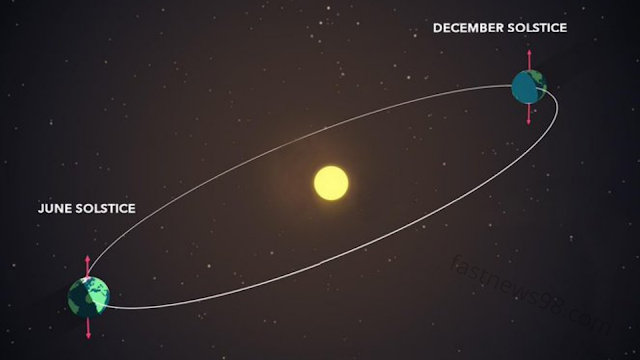 |
| Creditby image Twitter/@NASA |
Today is the summer solstice, the longest day of the summer season in the Northern Hemisphere, when the Sun is directly over the Tropic of Cancer. This day start of the summer season in the Northern Hemisphere and start of winter in the Southern Hemisphere.
ALSO READ: Spacex Launches New Solar Panels To Space Station
Two of these astronomical events occur during the year, the other being the winter solstice on December 21st. During these events, the Earth reaches a point where its inclination is at the maximum angle to the plane of its orbit. For this reason, one hemisphere receives more sunlight than the other.
On Monday, on the occasion of the summer solstice, NASA shared an image showing the position of the Earth on its axis relative to the Sun during both events. The Earth's axis is an imaginary pole that crosses the center of our planet from "high" to "low". The Earth revolves around this pole, leading to the Re-cycle of day and night.
Today is the northern #SummerSolstice, marking a new season as well as the longest day in the northern hemisphere. While it’s a time to enjoy the warmth & light, it also signifies an astronomical event caused by the tilt of Earth’s axis. 🌍☀️ Read more: https://t.co/Wt5BhAKAq1 pic.twitter.com/wsuKWdXr03
— NASA (@NASA) June 20, 2021
But the axis is always inclined (by 23.5 degrees with respect to the Sun-Earth line). Due to this tilt and the planet's revolution in its orbit around the Sun, we have the seasons, NASA said in a blog post. When the Earth is closer to the Sun, the areas closest to it have warm, humid days and nights; when the Earth is farthest from the Sun, areas far from the Sun are cold.
ALSO READ: Nasa chief Bill Nelson announced Two New missions to venus
During the summer solstice, the North Pole is tilted more directly towards the Sun than at any other time of the year, and the South Pole is away from the Sun. This causes sunlight to fall for a longer time (more than 12 hours) on places in the northern hemisphere and for fewer hours on places south of the equator.
